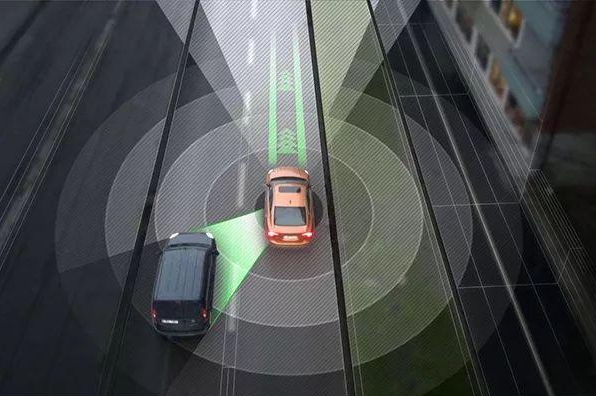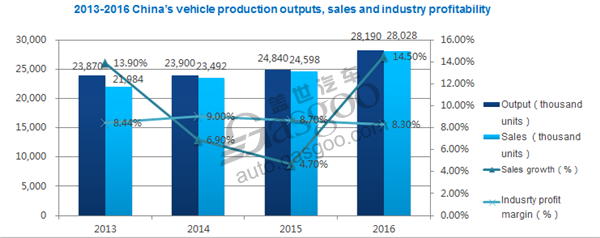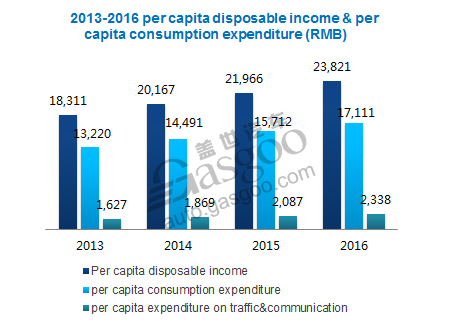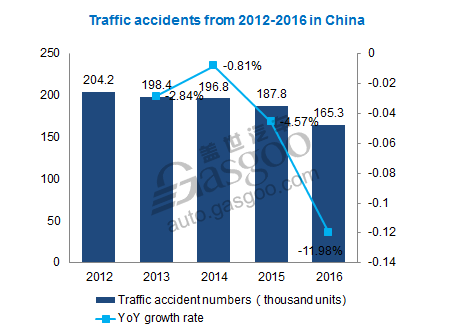Brief on autonomous driving development in China

Shanghai (ZXZC)- ZXZC Auto Research Institute analyzes the background of the autonomous driving development in China from three aspects of industrial milieu, economy and traffic condition.

Growing vehicle outputs, sales indicate great potential of autonomous driving
China has been seeing continuous growth in auto outputs and sales in past several years. In 2016, the national vehicle outputs and sales reached some 28.19 million units and 28.028 million units respectively with an industrial profit margin of 8.3%, according to the data from the National Bureau of Statistics. Facing the increasingly fiercer market competition, autonomous driving area, as a “new blue ocean”, not only attracts a slew of automakers to be involved in, but also promotes the industrial upgrading.
However, under the pressure of decreasing profit margin and slower growth of total profit, automakers keep seeking new breakthroughs to cater to the general trend in autonomous driving industry. Plentiful enterprises have flocked into this area to work on creating end-use intelligent products.
In addition, autonomous driving industry is gradually experiencing transformation and upgrading. Traditional automakers, vehicle startups, technology companies and Internet giants are racing to make layouts in this realm.
Consumption growth spurs industrial transformation
In terms of economy factor, the continuous growth in domestic economy, the improvement in people's living standard and the dynamic terminal consumer market accelerate the technology progress in auto industry. The massive market space attracts great amounts of investments that spur on the industrial development.

People's consumptions on traffic have been increasing year by year along with continuous growth of the disposable income per capita. Thus, the rising traffic consumption will help enlarge the market size for auto industry. The disposable income per capita had increased from RMB 18,311 in 2013 to RMB 23,821 in 2016. Meanwhile, transportation and communication expenditure per capita also showed year-on-year rising to RMB 2,338 in 2016 from RMB 1,627 in 2013, according to the data from the National Bureau of Statistics.
Thanks to the fast development of AI tech to some extent, investors hold earnest expectation over the autonomous driving industry, therefore speeding up the overall industrial progress.
Autonomous driving tech can solve traffic problems
Industry hold the view that autonomous driving tech can help solve such problems as the congestion caused by growing vehicles on road, frequent traffic accidents and low efficiency of urban transportation.

There were around 165.3 thousand traffic accidents nationwide in 2016, nearly 38.9 thousand less than that of in 2012, according to the data revealed by Traffic Management Bureau of the Public Security Ministry and sorted by ZXZC. Even so, this is still a huge number. ZXZC deems that autonomous driving systems in vehicles will help lower the likelihood of traffic accident occurrence, thus lessen the loss of property.
Additionally, affected by the rising vehicle parc, risky driving behaviors and low vehicle usage, the urban traffic congestion is getting worse day by day. Using autonomous vehicle technologies is beneficial to tackle some difficulties, such as eliminating constraint over drivers, improving vehicle speed and optimizing road resources.

